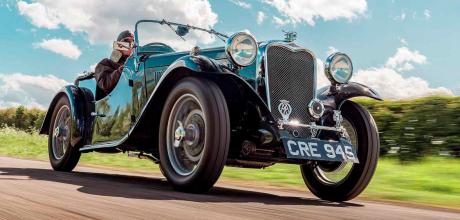1935 Singer Nine Le Mans Special Speed
This Singer Le Mans once belonged to a tail-gunner from the intrepid wartime Dambusters mission. John Simister retraces its old Air Force haunts.
Photography Alex Tapley
HERO’S RETURN THE DAMBUSTER’S SINGER
Visiting the ghosts of the past – and their haunts – in an RAF hero’s wartime wheels
If only cars could talk, and tell us what they have seen. That’s what my friend (and fellow Singer owner) Simon Worland said when he discovered surprising things about his 1935-built, 1936-model Singer Nine Le Mans Special Speed.
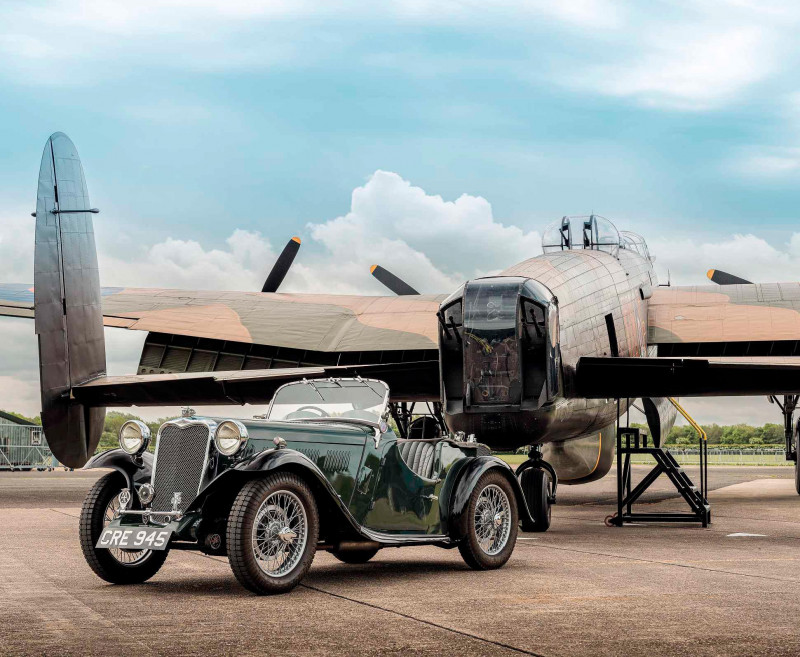
‘Simon’s car is in peak condition. Even a new Singer Le Mans can’t have felt any better than this’
He already knew that its first owner was Ronnie Marsh, Midlands racing driver and heir to the family meatpacking business, and that Marsh had it race-prepared for Le Mans in 1936. That race never happened, France being in a state of civil unrest at the time, and Ronnie replaced the Singer with something speedier.
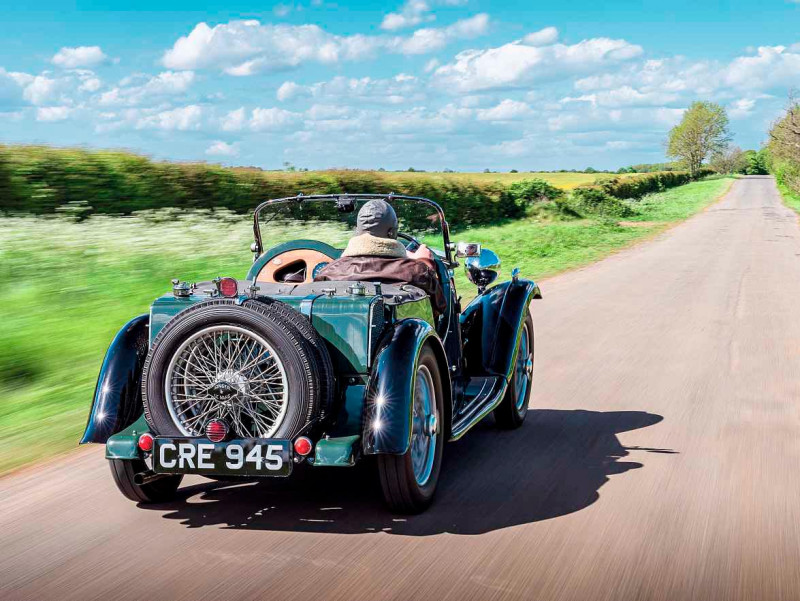
What happened to CRE 945 after that had always remained fuzzy so, 38 years after he bought it as a major restoration project, Simon decided to have a good look at the documents that came with it. A project with Year Six at his local primary school in Stoke Poges, attended by Simon’s daughter Anabel, was the catalyst.
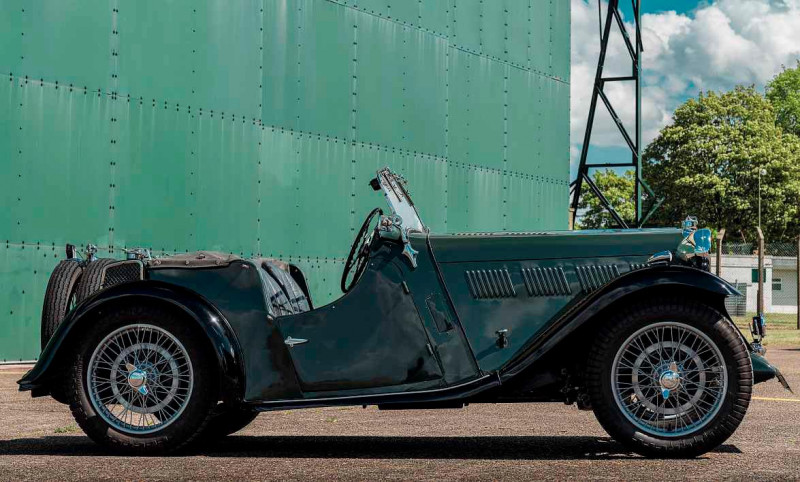
The children were studying World War Two, something that happened almost inconceivably long ago for them. So Simon brought his Singer along to make the era a touch more tangible, and they started researching past owners’ names. The first recorded, in what was possibly a replacement logbook, was based at RAF Wickenby in Lincolnshire. He would soon be based at RAF Scampton nearby. His name was Richard Trevor-Roper.
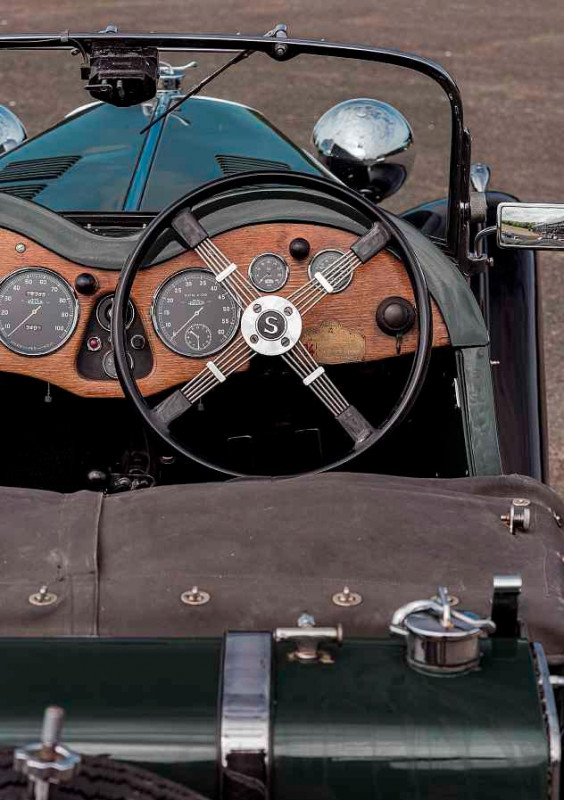
It was late evening on 16 May 1943. Nineteen Avro Lancaster bombers of 617 Squadron were readying to take off from Scampton in three waves, their mission to smash the Möhne, Eder, Sorpe, Ennepe and Diemel dams in western Germany’s industrial Ruhr region. The ‘Dambusters’ mission was one of the most famously daring and ingenious offensives of the war in Europe. At 21:39, Wing Commander Guy Gibson in the first wave’s lead Lancaster AJ-G began to taxi onto the grass runway, flanked by AJ-M and AJ-P. The impossibly daring ‘Operation Chastise’ had begun.
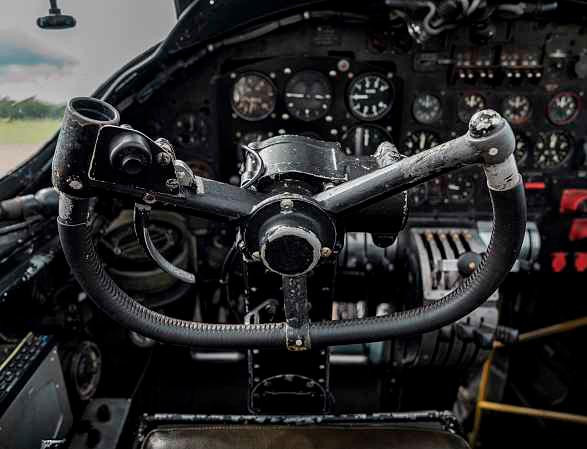
In each aeroplane’s distended belly was stowed what looked like a giant oil drum, the ‘bouncing bomb’ devised by Barnes Wallis of Brooklands-based Vickers-Armstrong. To bounce correctly along the water surface, and to hit the dam at the right speed and position, the bomb – codenamed ‘Upkeep’ – had to be ‘back-spun’ at 500rpm then dropped between 475 and 425 yards in front of the target from a Lancaster flying at 220mph just 60ft above the surface. The Lancaster, suddenly nine tonnes lighter, then had to climb hard and turn to clear the dam and the aftermath of the drop, flak shells bursting all around. Each Lancaster’s rear gunner was the most vulnerable crew member of all. In the tail of AJ-G, Gibson’s aircraft, was Flight Lieutenant Richard Trevor-Roper – the highest-ranking gunner of the whole operation.
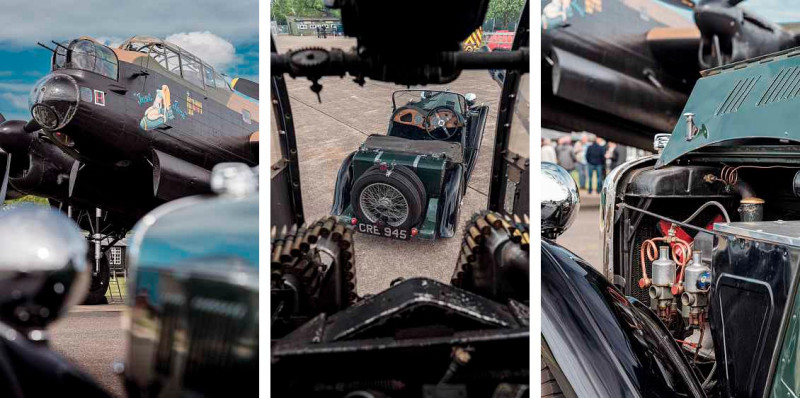
En route to the Ruhr was the ever-present fear of interception by enemy aircraft, so the Lancasters flew at 1500ft over England, dropped briefly to 60ft over the North Sea to test each aircraft’s pair of Aldis lamps whose downward-angled beams were set to merge at exactly that low height above the water, then continued at 100ft over the Netherlands and Germany. This kept the aircraft below the reach of radar, but it called for hyper-accurate navigation to avoid power lines. AJ-M, avoiding flak, actually flew under one.
Combined with this stress was the claustrophobia-inducing crampedness of the gun turret and the relentless noise. Would there be space in Trevor-Roper’s head to look forward to another run in his just-bought Singer? Probably not, a moment’s inattention and he might have been too late to react to enemy fire.
AJ-G and its two companions, followed by the second and third groups of three that completed the first wave, were heading for the first of the five dams scheduled for demolition: the Möhne. Once there, Gibson did a recce run, declared that he ‘liked the look of it’ and lined up for Operation Chastise’s first bomb drop, Aldis beams coalescing as they should.
Enabling the bomb-aimer, Pilot Officer FM Spafford, to release Upkeep at precisely the right moment was a brilliantly simple sighting device. It had an eyepiece at one end and a pair of pegs at the other, mounted on two diverging wooden strips. As soon as the pegs aligned with the dam’s towers, Spafford would press the release button. He did so at 00:28 on that moonlit night. Trevor-Roper saw Upkeep bounce three times and then, ten seconds later, create ‘a terrific explosion’ and a huge sheet of surging water. Was the dam breached? Not yet.
Nor was it after AJ-M’s run, under heavy fire: the bomb dropped late and bounced over the dam to destroy the power station beyond in a ‘gigantic flash’. The heavily damaged Lancaster then crashed, with just two survivors – one the rear gunner – who had baled out. Chastise was not going well, so Gibson decided to fly just ahead, and to the right, of AJ-P on its approach to the dam to distract the enemy gunners. As AJ-G flew over the dam it turned left so Trevor-Roper could engage the guns in the nearby meadow while AJ-P released its load. Still the dam held. Next, AJ-A, again protected by AJ-G and also by AJ-P. This was the Upkeep that breached the dam, but in such slow motion that the fifth aircraft, AJ-J, also dropped its bomb even as the Möhne was crumbling. This first of the targets was now well and truly destroyed.
Gibson, and the three aircraft of the first wave still with an Upkeep on board, then headed for the Eder dam, 14 minutes away. It was undefended but the approach required a steep dive from 1000ft. The last Upkeep did the job, and the surviving Lancasters of the first wave headed home. Two were shot down, including AJ-A. Gibson’s AJ-G landed back at Scampton at 04:15, with three small holes in the tail just ahead of Trevor-Roper’s turret. And the other dams? The second wave targeted the Sorpe, but didn’t breach it. The third wave finished that job, but the Ennepe remained intact and there were no resources left to tackle the Diemel. The RAF had inflicted huge damage on Germany’s infrastructure, but more non- Germans (593, many of them in forced labour) died from the Möhne dam’s breach than Germans (476).
Richard Trevor-Roper was awarded the Distinguished Flying Cross for his role in Operation Chastise. He went on to fly on other missions, but was posted as missing after a bombing raid on 30 March 1944 over Nuremberg. His death was confirmed in June that year.
So it was that, on 30 June 1944, ownership of Singer Le Mans CRE 945 passed to John James of 9 Squadron at RAF Bardney (now closed), again in Lincolnshire and near RAF Coningsby to which 617 Squadron had relocated. The Singer’s next owner, from 1947, seems to have been a civilian in Suffolk, as were the two after that until 1958 when Nicholas Galpin at RAF Cranwell, near Sleaford in Lincolnshire, bought it. Flight Lieutenant Galpin was an instructor on Sabres, Hunters and Lightnings, but he didn’t keep the Singer long: he sold it to Michael Gibbons, a Canberra pilot for 12 Squadron at Coningsby, later that year.
Late in 1959, he sold the Singer for £25 to his navigator, Arthur Creighton, having fallen for an MG TA. Creighton – who died in 2019, shortly after Simon had made contact with him – had just passed his driving test and fancied a sports car, but he sold CRE 945 just a few months later to another Coningsby Canberra pilot who later became an Air Vice-Marshall. It then passed through four more owners until bought by Alan Manton of Hemel Hempstead on 24 April 1969. Simon, at just 19 years old and having already restored a BSA Bantam, bought what was by then a derelict ruin from him on 20 April 1983.
Armed with all this history, and the knowledge that RAF Scampton is soon to close, Simon and I have planned a Lincolnshire pilgrimage. At 5am, because we have to be 150 miles away by 9am mostly via B-roads in an 86-year-old car, the fruity sound of a 972cc, overhead-camshaft Singer engine snorting through a pair of tiny SUs announces Simon’s arrival at my house. The weather is dry, the hood is down (it’s almost never up) and the sidescreens are stowed. My overnight bag fights for space with a toolbox and an oil can.
Simon drives; his car is in peak condition with the light patina of a nicely aged restoration. It has a remarkable ride for something running on solid axles and friction dampers. It has no rattles. Its punchy little engine is much smoother than you’d expect from a design with a twobearing crankshaft, and keen to rev higher than caution suggests is wise. Its Alfin-drummed hydraulic brakes are strong and consistent. The clutch doesn’t judder and it never overheats. Even a new Singer Le Mans can’t have felt any better than this.
So we arrive at our first stop, East Kirkby’s Lincolnshire Aviation Heritage Centre with an excellent café, in surprisingly good shape. We’re here to see the centre’s 1945 Lancaster known as ‘Just Jane’, built at Austin’s Longbridge factory for the RAF’s Tiger Force in the Far East. Japan surrendered unexpectedly early, so this Lancaster never saw wartime service. After a life involving the French Naval Air Arm, air-sea rescue in New Caledonia, display in Sydney and a return to Britain, ‘Just Jane’ was eventually bought by brothers Fred and Harold Panton after it had spent ten years as ‘gate guardian’ at RAF Coningsby.
The Pantons had bought a part of the defunct East Kirkby aerodrome, which they developed into what we see today. And they particularly wanted a Lancaster to commemorate their brother Christopher, killed during an air raid on Nuremberg in March 1944. Could it have been the same raid that claimed Richard Trevor-Roper? ‘Just Jane’ is about to go on one of its regular, and very noisy, taxiing runs – the plan and the hope is to get it into flying condition towards this decade’s end – but there’s time for us to bring a Lancaster and the Singer together as might have happened nearly eight decades ago. And for me to contort myself into the rear gun turret: surrounded by Perspex, I feel simultaneously claustrophobic and exposed. Imagine that at night, flak bursting all around, an inescapable nightmare.
From here we head west towards Coningsby, nowadays home to the Battle of Britain Memorial Flight which includes a flying Lancaster. The Singer was based there in the late 1950s; Arthur Creighton told Simon it was serviced at nearby Finney’s Garage, owned by a racing enthusiast who kept an ERA in the showroom. That business is no longer in the village but has moved to a road just outside it. The Finney family sold it a while ago, we learn on arrival, but the name endures.
Arthur also told Simon of Saturday morning amusement with him and Michael Gibbons in the Singer, performing multiple circuits of the Caenby Corner roundabout where the A631 crosses the A15. Cyril the AA patrolman, regularly on duty with his dog by the AA box, had to salute the Singer’s AA badge on every lap to his increasing ire. Nowadays the box has vanished with no trace, and the roundabout is fiendishly busy. Six miles south of it and the same distance due north of Lincoln is RAF Scampton, base for the Dambusters raid and our next destination. We arrive and follow our guide to one of the hangars that housed the Lancasters nearly eight decades ago. History is all around: an Upkeep, a Tallboy as used to sink the Tirpitz, relics of war both hot and cold. And upstairs, Guy Gibson’s office and the adjacent dispatch room, just as they were in 1943. Under Gibson’s desk sits a life-size model of his black labrador, although the poor canine whose name can no longer be mentioned was run over the day before the raid, and buried at midnight on the 16th.
This is where the mission took shape. Here we find records and photographs of crew members, and a surviving example of the bomb-aimer’s wooden sighting device plus a bomb-release button to squeeze. Nearby is the former officers’ mess, now-semi-derelict, then the scene of both extreme jubilation among those who returned and extreme sadness for those who didn’t.
Today’s A15 skirts round the Scampton base, the kink in the formerly dead straight road built to make room for the longer, and hard-surfaced, runway needed for jet-powered bombers. Part of the old road still exists, running south as far as the airfield’s perimeter; it’s more derelict even than the old officers’ mess, but passable. CRE 945 would surely have driven on it during the war so I drive it there again, trying to imagine what might have been going through Richard Trevor-Roper’s head.
And then we head south-east to stay the night at Woodhall Spa’s Petwood Hotel, which became 617 Squadron’s officers’ mess after the move to nearby Coningsby. It’s not messy at all; it’s a mock-Tudor sanctuary and, as we see when we arrive, is currently accommodating an outing by members of the Rolls- Royce Enthusiasts’ Club and their vintage-era machines. The Singer is tiny in comparison, but warmly welcomed. Tomorrow, under threatening skies, we’ll visit the International Bomber Command Centre just south of Lincoln before heading home. The atmospheric exhibition there provokes deep thought, the spire-like memorial is the tallest one in the UK that marks a war. Its 102ft height exactly matches a Lancaster’s wingspan. By the spire are layers of memorial walls, 270 panels bearing the names – nearly 58,000 of them – of all who have died while serving in Bomber Command. Including, of course, Richard Trevor-Roper, past owner of Simon’s Singer. Yes, if only cars could talk.
THANKS TO Andrew Panton at the Lincolnshire Aviation Heritage Centre, Karen Gibbard at RAF Scampton – and acknowledgement to The Dambusters by John Sweetman, David Coward and Gary Johnstone, which tells the story of Operation Chastise in deep detail.
Top and above Singer pauses outside the Scampton hangar that housed 617 Squadron’s Lancasters; the Petwood Hotel served as the officers’ mess when 617 moved to nearby Coningsby. Above and opposite Surface of A15 ghost road appears to have seen no maintenance since the 1940s; Singer’s long-ago restoration has matured nicely; Singer owner Worland sits at Gibson’s desk with canine guard at his feet; Upkeep bomb resembles a giant armoured oil drum.
Opposite and this page Singer bowls along old A15; Trevor-Roper’s entry in Scampton card index; Lancaster’s fight deck; it’s hoped that ‘Just Jane’ will be flying by this decade’s end; the view from the rear turret; antique SUs feed Singer’s feisty little engine.
TECHNICAL DATA 1935 Singer Nine Le Mans Special Speed
- Engine 972cc OHC four-cylinder, two SU HV carburettors
- Max Power 38bhp @ 5000rpm
- Max Torque 29lb ft @ 3300rpm
- Transmission Four-speed manual non-synchro gearbox, rear-wheel drive
- Suspension Front: beam axle, semi-elliptic leaf springs, Hartford friction dampers. Rear: underslung live axle, semi-elliptic leaf springs,
- transverse Hartford friction dampers Steering Worm and nut
- Brakes Drums
- Weight 800kg
- Top speed 80mph (est)
- 0-60mph 28sec (est)


